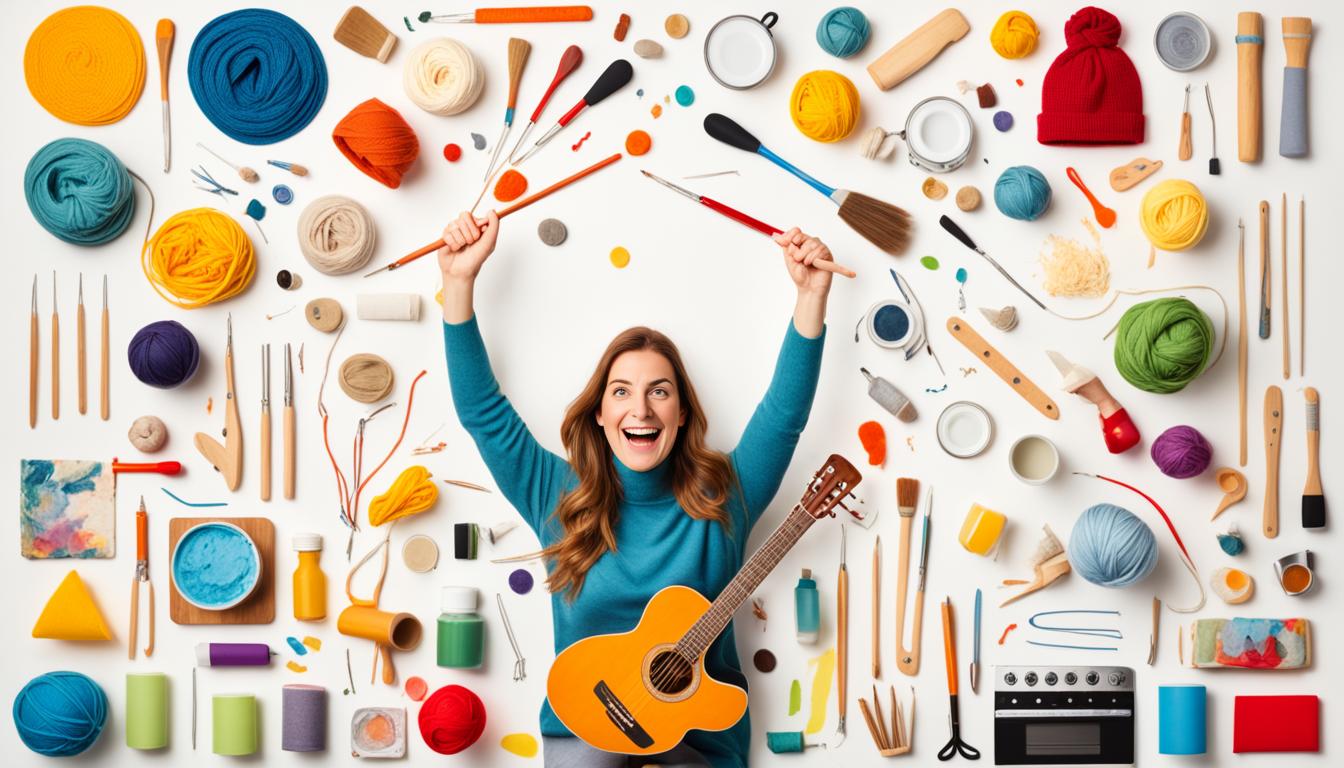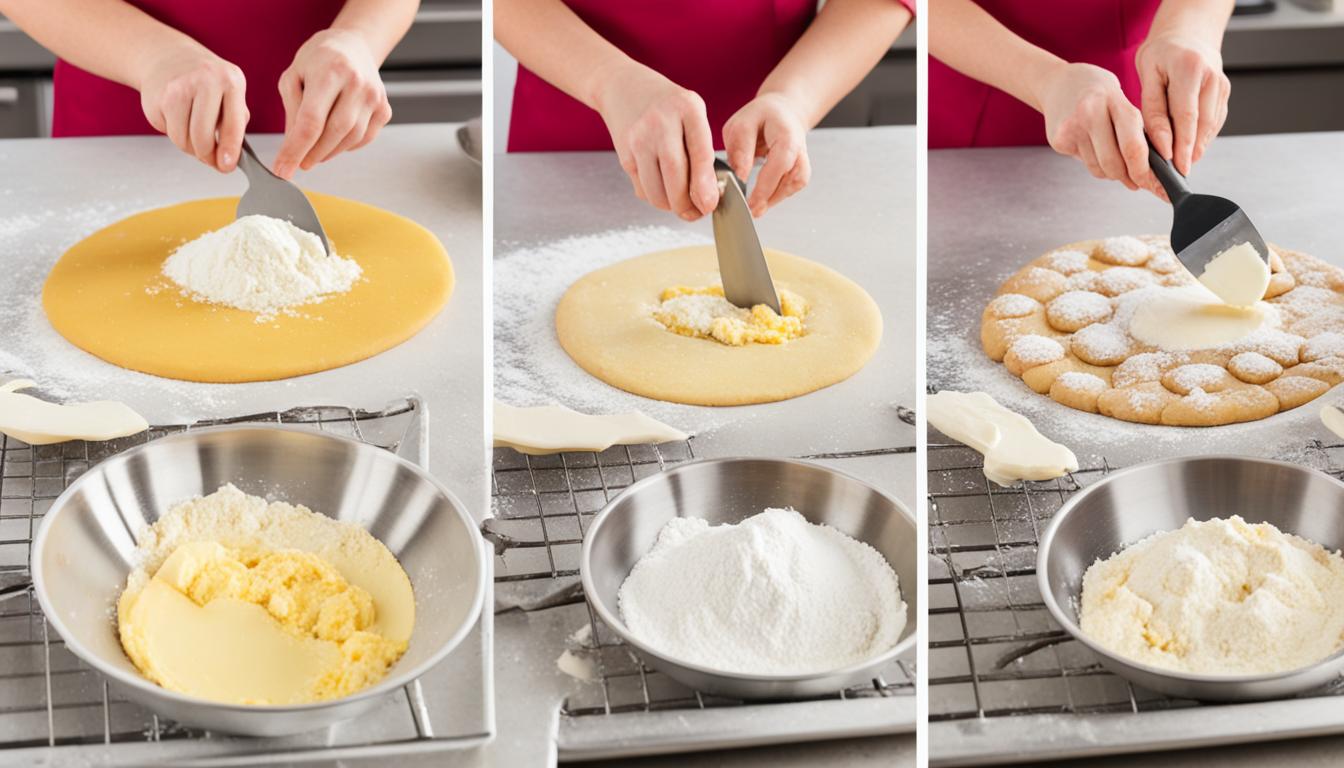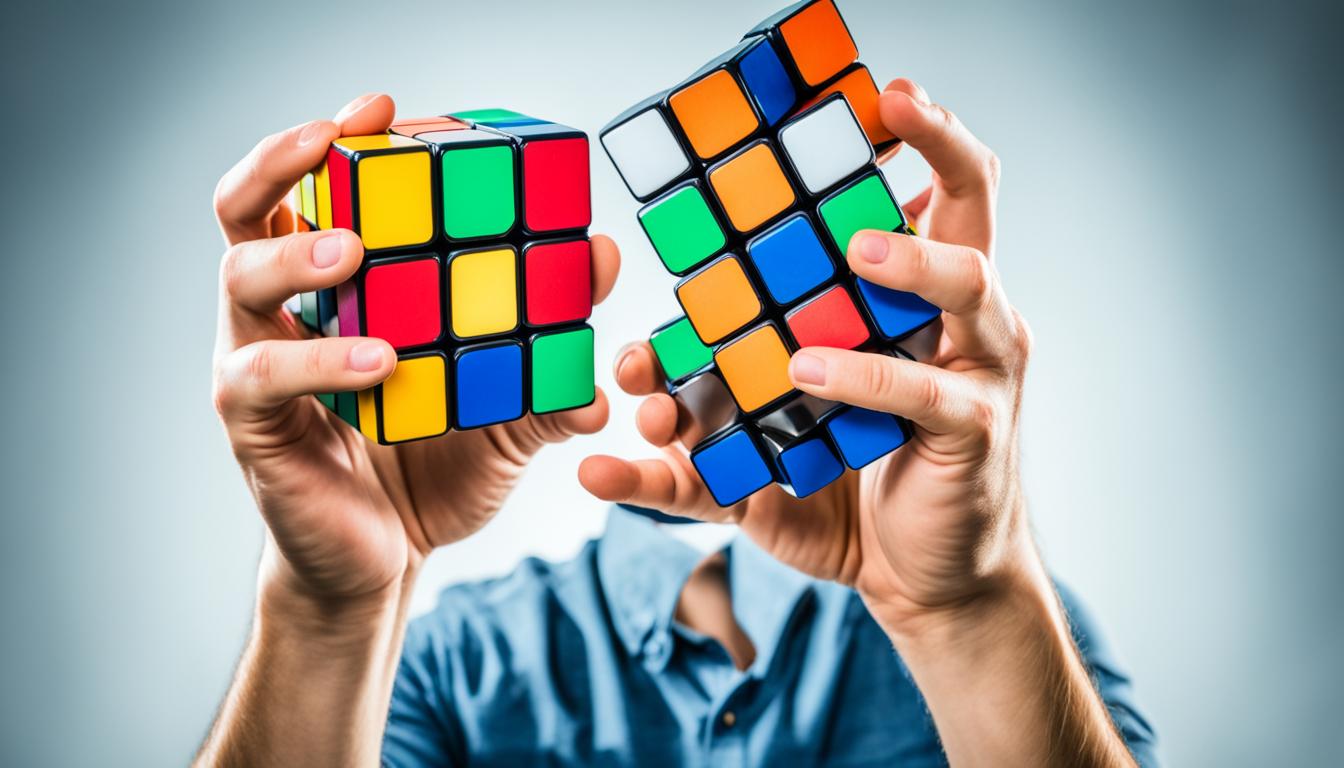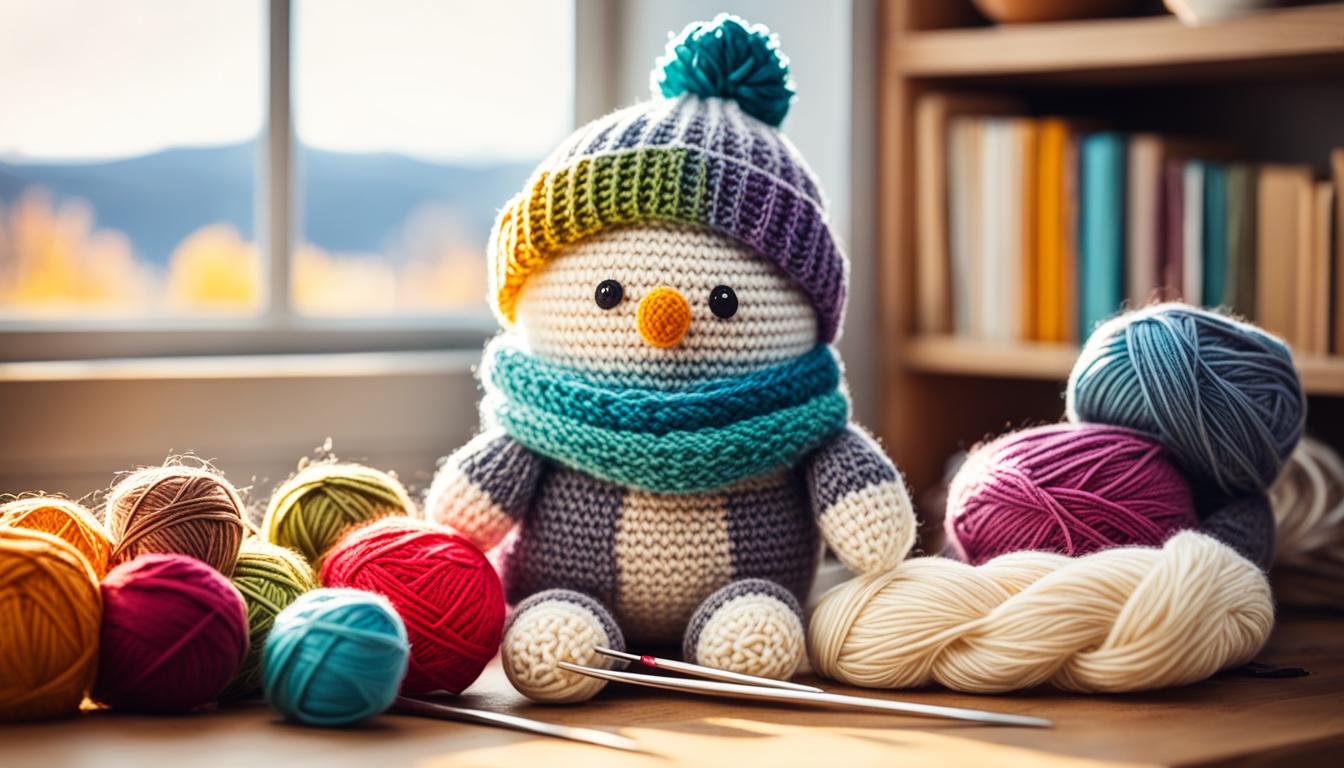Learning new skills is great for personal growth and fun. It’s amazing how quickly you can pick up something new. Just one day can change your life, making you better at things you love or need for work.
Imagine learning to play the guitar or make origami in a day. These activities are fun and useful. They help you grow and make life more enjoyable.

Key Takeaways
- Quick learning can lead to fulfilling personal growth.
- Mastering new skills in a day can satisfy your curiosity and improve your toolkit.
- Skill acquisition is valuable for both personal and professional settings.
- Starting with simple tasks can make learning more manageable and enjoyable.
- Exploring new hobbies can enhance your overall quality of life and offer self-improvement.
How to Juggle
Learning to juggle is fun and boosts your hand-eye coordination. This guide starts with the three-ball cascade and moves to harder objects. It’s great for impressing friends or finding a new hobby.
Start with Three Balls
Begin with the three-ball cascade. Here’s how to start smoothly:
- Choose the Right Balls: Use beanbags or balls that are easy to catch. They should not bounce away. Don’t pick objects that are too light or too heavy.
- Hand Movements: Hold two balls in your dominant hand and one in the other. Throw one ball from your dominant hand up to the other hand. As it goes up, throw the ball from your other hand the same way. Keep doing this.
- Focus and Rhythm: Keep a steady rhythm and watch the top of the arc, not the balls. This helps you get better at the three-ball cascade.
- Practice: Practice for at least 15 minutes every day. Getting good at juggling takes time and patience.

Progress to More Challenging Objects
Once you’re good with three balls, try harder objects. Here’s how to improve your juggling:
- Clubs: Clubs need a special grip and throw. Start with one club and add more as you get better.
- Rings: Rings look cool. Start with one and work on your throw before adding more.
- Fire Sticks: Try fire sticks only after you’re really good with other objects. Always follow safety rules and practice in a safe place.
Juggling makes you more focused and can make you stand out in work. It’s also fun and can help you connect with others. Juggling can make tense situations easier and help you build strong relationships with people.
SkillBenefitsRequirementsJugglingHand-eye coordination, creativity, concentrationThree balls, daily practiceJuggling with ClubsAdvanced coordination, impressive performancesClubs, safety precautionsJuggling with Fire SticksHigh entertainment value, advanced skillFire sticks, extensive practice, safety
Baking Cookies
Learning to bake cookies is fun and rewarding. It combines making tasty treats with improving your kitchen skills. Start with a classic chocolate chip cookies recipe.

First, get your ingredients ready: flour, sugar, butter, eggs, and chocolate chips. Make sure all ingredients are at room temperature for better mixing. Use a good mixer, like a 5-quart Kitchen-Aid, for great results.
Begin by creaming the butter and sugar until fluffy. Then, add eggs one at a time, mixing well after each. Mix in dry ingredients carefully to avoid tough cookies. It’s important to know about leavening agents like baking powder and soda for the right texture.
Try making cookies in fun shapes, like teapots, for a personal touch. This makes baking more fun, especially with kids or friends.
Use light-colored metal pans for even baking. Line them with parchment paper or foil for easy cleanup. Check your oven’s temperature often for perfect baking.
Sharing homemade cookies is special. Making a batch brings joy and a delicious treat. Whether you stick to chocolate chip cookies or try new recipes, baking is rewarding and fun.
Changing a Flat Tire
Knowing how to change a flat tire is key in DIY car maintenance. It’s not just handy; it’s also about being ready for emergencies. Here’s a simple guide to help you change a flat tire.
- Find a Safe Location: Move to a safe spot away from traffic. Turn on your hazard lights to warn others.
- Gather Necessary Tools: You’ll need a spare tire, a car jack, a lug wrench, and the car’s manual for help.
- Consult the Manual: The manual has important steps, like how to lower the spare and set up the jack right.
- Loosen the Lug Nuts: Loosen the lug nuts with the lug wrench before you jack up the car. This takes a lot of strength, so be ready.
- Lift the Car: Put the jack under the car as the manual says. Raise the car until the flat tire is off the ground.
- Remove the Flat Tire: Take off the lug nuts and remove the flat tire. It might be hard, but don’t give up.
- Install the Spare Tire: Put the spare tire on the hub and tighten it by hand. Tighten more after you lower the car.
- Lower the Car: Carefully lower the car to the ground with the jack. Then, use the lug wrench to tighten the lug nuts well.
- Stow the Flat Tire and Tools Away: Put the flat tire, jack, and tools back in their places. Make sure they’re all secure to avoid problems while driving.
This guide shows how important it is to know how to change a flat tire. By learning this, you boost your self-sufficiency and get ready for roadside emergencies.
StepDurationDifficultyFind a Safe Location5 minutesEasyGather Necessary Tools5 minutesEasyConsult the Manual10 minutesMediumLoosen the Lug Nuts10 minutesHardLift the Car5 minutesMediumRemove the Flat Tire5 minutesHardInstall the Spare Tire10 minutesMediumLower the Car5 minutesMediumStow the Flat Tire and Tools Away5 minutesEasy
Solving a Rubik’s Cube
Learning to solve a Rubik’s Cube is a fun challenge. It makes you think and brings joy. Mastering Rubik’s Cube algorithms and speedcubing techniques boosts your problem-solving skills.

The Basics of Solving a Rubik’s Cube
Start by learning the Rubik’s Cube’s basic structure. Get to know the notation system for Rubik’s Cube algorithms. This system uses letters like U (up), D (down), L (left), R (right), F (front), and B (back). Each letter means a 90-degree turn of a specific face.
A letter with an apostrophe (like U’) means a counterclockwise turn.
Any Rubik’s Cube can be solved in 20 moves or less. But start with small steps, solving one layer at a time. Practice is key. Spend time learning different cube configurations and algorithms.
Here are some important stats to remember as you practice:
MilestoneTimeCurrent World Record3.47 secondsAverage Time for Speedcubers3-4 moves per secondPersonal Best Time of the Author2 minutes 48 seconds
Practice solving the Rubik’s Cube often to get faster and more skilled. Hold the cube right and use lubrication for smoother moves. After about 10,000 tries, you’ll master it and solve it quickly.
Solving a Rubik’s Cube also helps you stop biting your nails. It keeps your hands busy. This puzzle improves focus, spatial thinking, and your brain’s overall abilities.
CPR
Cardiopulmonary Resuscitation (CPR) is a key skill for everyone. It can save lives. In the U.S., over three hundred thousand people die from sudden cardiac arrest yearly. CPR can double or triple survival chances in cardiac arrest. It involves several important steps.
Step 1: Check Airway. First, make sure the person’s airway is open. Tilt their head back and lift their chin. Remove any blockages if needed.
Step 2: Check Breathing. Then, see if the person is breathing. Look for chest movements, listen for sounds, and feel for breath on your cheek. If they’re not breathing right, start CPR.
Step 3: Check Circulation. Look for circulation signs like coughing or movement. If not, start chest compressions. Put your hands on the chest and push hard and fast at 100-120 times a minute.
Learning CPR takes about five minutesand could save a life. Concordia University found 79% of cardiac arrests happen outside the hospital. Every minute without a defibrillator lowers a victim’s survival chance.
The American Heart Association says to practice CPR often and take a certified course. First aid and resuscitation classes like the First Aid for Severe Bleeding and Anaphylaxis courses are quick. They teach you how to handle emergencies.
The Red Cross has been teaching people to handle emergencies for over a century. Their classes cover treating severe bleeding, burns, and more.
Here’s a quick look at some key emergency training courses:
Emergency Response TrainingDurationCPR Training5 minutesFirst Aid for Severe Bleeding30 minutesAnaphylaxis and Epinephrine Auto-Injector30 minutes
Learning CPR and other skills is a great way to be safe and ready. By knowing these techniques, you can help in emergencies. Start learning these skills today through formal courses.
Pen Spinning and Coin Rolling Tricks
Learning pen spinning techniques and coin rolling tricks is fun and shows off your manual agility. They’re great for improving finger dexterity and hand-eye coordination. Plus, they’re cool office tricks to show your coworkers.

To begin with pen spinning, pick a balanced pen. Try the “Thumb Around” move first. It might take some practice, but keep at it. As you get the hang of it, you can try harder tricks like the “Charge” and the “Finger Pass.”
For coin rolling, start with a coin that feels right in your hand. Use your thumb to roll it over your fingers. This trick shows off your coordination and manual agility.
Practicing these tricks has many benefits:
- Enhanced Finger Dexterity: Boosts fine motor skills, important for many tasks.
- Mental Focus: Helps you concentrate and can clear your mind.
- Hand-Eye Coordination: Key for athletes, musicians, and anyone wanting better physical skills.
Pen spinning and coin rolling are great office tricks. They’re easy to do anywhere and can make social events more fun. In meetings or at parties, these skills will impress and entertain people.
So, if you want to improve your finger dexterity or just have fun with friends, these tricks are perfect. They bring fun and skill to what you do.
Master Basic Knitting or Crocheting
Learning to knit or crochet is great for many reasons. These hobbies are calming and rewarding when you make something by hand. They’re perfect for anyone interested in yarn crafts, and they’re easy to learn with practice and patience.
Start with simple projects like scarves or dishcloths if you’re new. Using big yarn and needles makes it easier to see and manage your stitches. Basic techniques like Single Crochet or Garter Stitch are great for beginners. They’re the building blocks for more complex patterns later on.

Once you feel more confident, try making shawls, sweaters, or hats. A good knitting guide might show you 31 projects, from clothes to gifts. These beginner patterns use simple stitches and techniques, making them fun to do.
Practice and patience are key to getting good at knitting or crocheting. Watching videos and following step-by-step guides can really help you learn. Plus, you can make your projects unique with tips on customization.
“Crafting with yarn is not only creative but also a wonderful way to unwind. By mastering basic knitting or learning to crochet, you embrace a fulfilling and therapeutic hobby.”
Here’s a look at the basics of knitting and crocheting:
AspectKnittingCrochetingToolsTwo needlesSingle hookFabric TypeSmooth, flexibleDense, sturdySpeedModerateGenerally fasterYarn UsageEconomicalUses 30% more yarnStarter Kits$30 to $100$25 to $40Popular ProjectsScarves, sweaters, shawlsBlankets, accessories, garments
Whether you prefer knitting or crocheting, both are rewarding hobbies. They let you create something special. Jump into these skills and enjoy making things that are all your own!
Learning Basic HTML
HTML is the key to the web, used by 92.8% of all websites. It’s vital for web development or understanding website building. Learning HTML is a must for web careers or web knowledge.

HTML Basics
HTML structures web content. It’s used on every web page to arrange text, images, and more. HTML has grown in use, while XHTML has decreased. By 2024, 28.7 million software developers will be needed, offering many jobs for HTML experts.
Knowing HTML prepares you for many jobs. These include Frontend, Backend, and Full Stack Developers. It also helps in Email Marketing, Data Science, and more.
Progressing to CSS and JavaScript
After learning HTML, move to CSS. CSS makes web pages look good with styles like colors and fonts. You can learn CSS basics in 3–4 days.
Then, learn JavaScript for interactive web features. JavaScript adds dynamic elements like form checks and sliders. With HTML, CSS, and JavaScript, you can make complex web pages.
Practice with projects to improve your skills. Small projects help you learn and solve problems. Good design tips and responsive design make your pages look great on all devices.
Spend 2–3 hours daily, and in 16–21 days, you can learn HTML and CSS basics. This builds a strong coding foundation for web development careers.
Conclusion
Learning new skills is easy and great for growing personally and professionally. We looked at simple skills like juggling and baking, to CPR and solving a Rubik’s Cube. These skills can be learned quickly, making us more confident, motivated, and happy.
Staying curious and learning new things makes our brains stronger. It helps us feel brave, sure of ourselves, and powerful. Dennis Buttimer says learning new skills is good for our mind and body. It keeps us balanced, reduces stress, and makes us stronger.
By trying new skills that match our interests and goals, we get better and feel great. This feeling of success helps our mental health and lets us do more on our own. Sharing what we learn can encourage others to grow their skills too. So, start your learning journey and watch how it improves your life.
FAQ
Why is quick skill acquisition valuable?
Quick skill learning helps you grow your skills fast. It makes you ready for new challenges. It also opens doors to new chances quickly.
What are the benefits of learning to juggle?
Juggling boosts your hand-eye coordination and focus. It’s a cool skill to show off to friends. It helps improve your physical skills too.
How do I start with three-ball juggling?
Begin with basic hand movements and a rhythm with three balls. Aim for a steady pattern by catching and throwing consistently.
How can I progress to more challenging juggling objects?
Move to harder objects like clubs or rings once you’re good with three balls. Always be safe, especially with fire sticks. Improve your skills step by step.
What is the basic process for baking cookies?
Start with a simple chocolate chip cookie recipe. Mix ingredients, shape the dough, bake, and share your homemade cookies with others.
How do I change a flat tire safely?
Find a safe spot, use the right tools, and follow steps to take off the flat tire and put on a spare. It’s key for car care and emergencies.
What are the basic steps to solve a Rubik’s Cube?
Learn basic moves and algorithms, including how to read them. Spot patterns and solve the cube to boost your problem-solving skills.
Why is learning CPR important?
CPR can save lives in emergencies. It teaches you how to check airways, breathing, and circulation. Getting certified is a good idea.
What are the basics of pen spinning and coin rolling tricks?
Pen spinning and coin rolling need practice to improve your hand skills and focus. They’re fun at parties and help with hand-eye coordination.
How can I start knitting or crocheting?
Start with basic stitches and techniques in knitting or crocheting. Begin with simple projects like scarves or blankets. Enjoy making things by hand as you get better.
What are the fundamentals of HTML?
HTML is the backbone of web pages. Knowing basic HTML tags and elements is key. Then, use CSS for style and JavaScript for interactivity to build a strong web foundation.
How does one progress from HTML to web development?
After HTML, learn CSS for looks and JavaScript for interactivity. These skills help you make websites, blogs, or even start a web development career.

More Posts
10 Productivity Tips for Real Estate Agents
Real estate agents must be highly productive, focusing on important activities. They should not just handle more listings or showings. Instead, they need to improve how they work and look at their current...
10 Motivation Hacks to Beat Procrastination
Procrastination is a big problem for many people. In fact, a study by professor Piers Steel found that ninety-five percent of us procrastinate. This habit can make us less productive, more stressed, and...
13 Tips for organizing business workflow & reduce stress
Welcome to our latest blog post, where we’re diving into the world of workflow organization to help you transform your business experience! If you’re tired of juggling chaotic to-do lists, drowning in repetitive...
Compound Effect: 8 Lessons to Deal with Procrastination
Procrastination is a big problem, but Darren Hardy's "The Compound Effect" helps a lot. This book is great for those wanting to grow personally and succeed. It teaches us to take small, steady...